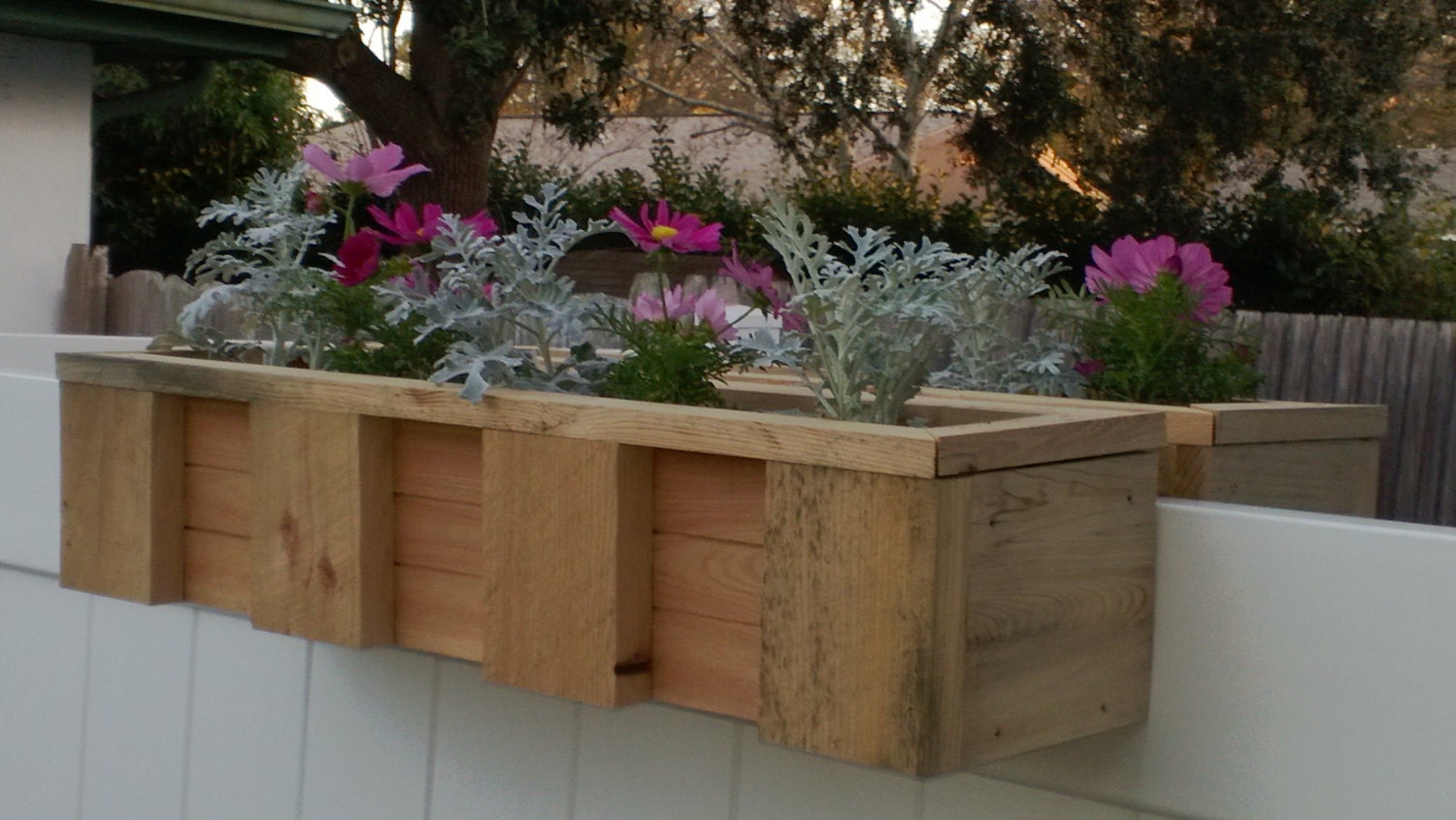Fence top planter boxes are an innovative and visually appealing way to add a touch of greenery and charm to your outdoor spaces. These versatile containers, perched atop your fence line, offer a unique and elevated perspective on gardening, allowing you to showcase your favorite plants while maximizing space and adding a decorative touch to your surroundings.
From selecting the right materials and designing the perfect size and shape to choosing suitable plants and ensuring proper care, this guide will provide you with all the essential information you need to create and maintain a thriving fence top planter box that will enhance your outdoor experience for years to come.
Design and Construction Considerations

When designing a fence top planter box, several factors should be taken into account to ensure durability, visual appeal, and compatibility with the existing fence.
The size and shape of the planter box should be determined based on the dimensions of the fence and the desired aesthetic effect. Common shapes include rectangular, square, and L-shaped boxes, which can be customized to fit different fence styles.
Materials and Construction Techniques
For durability and resistance to weather conditions, materials such as treated lumber, cedar, or redwood are recommended. These woods are naturally resistant to rot and decay, ensuring the longevity of the planter box.
Construction techniques should prioritize stability and drainage. The planter box should be securely attached to the fence using galvanized screws or bolts to prevent wobbling or falling. Adequate drainage holes should be drilled into the bottom of the box to prevent waterlogging and root rot.
Customizing the Design
The design of the planter box can be customized to complement the style of the fence and the surrounding landscape. For example, a rustic fence can be paired with a planter box made from reclaimed wood, while a modern fence might be complemented by a sleek, minimalist planter box.
The choice of plants for the planter box should also be considered. Plants that are tolerant of the local climate and require minimal maintenance are ideal. Trailing plants can be used to create a cascading effect over the sides of the planter box, while upright plants can add height and structure.
Plant Selection and Care: Fence Top Planter Box

Choosing the right plants for your fence top planter box is essential for success. Consider the amount of sunlight your box will receive, as well as the water requirements of different plants. You’ll also want to select plants with root systems that are suited to the size and depth of your box.
When selecting plants, it’s important to think about how they will look together. Choose plants with complementary colors and textures to create a visually appealing display. You may also want to consider the height and shape of the plants to create a layered effect.
Watering
Watering your fence top planter box regularly is essential for keeping your plants healthy. The frequency of watering will vary depending on the type of plants you have, the weather conditions, and the size of your box. A good rule of thumb is to water your plants when the top inch of soil feels dry to the touch.
Fertilizing, Fence top planter box
Fertilizing your plants regularly will help them to grow and thrive. Use a balanced fertilizer that is specifically designed for container plants. Follow the instructions on the fertilizer package for the recommended dosage and frequency of application.
Pruning
Pruning your plants will help to keep them healthy and looking their best. Remove any dead or diseased leaves or stems. You may also want to prune your plants to shape them or to control their growth.
Installation and Maintenance

Installing and maintaining a fence top planter box is crucial to ensure its longevity and enhance its aesthetic appeal. Proper installation involves securing the box to the fence and ensuring adequate drainage, while maintenance includes cleaning, repairing, and repainting as needed.
Installation
- Select the right location: Choose a fence section that receives ample sunlight and has good drainage.
- Measure and mark the fence: Determine the desired placement of the planter box and mark the corresponding points on the fence.
- Attach the brackets: Secure the brackets to the fence using appropriate fasteners, such as screws or bolts.
- Position the planter box: Place the planter box on the brackets and align it correctly.
- Secure the box: Tighten the bolts or screws to firmly attach the planter box to the brackets.
- Drill drainage holes: Create drainage holes in the bottom of the planter box if it doesn’t have any.
Maintenance
- Cleaning: Regularly remove debris, dirt, and algae from the planter box using a mild detergent and water.
- Repairing: Inspect the planter box periodically for any damage, such as cracks or loose joints. Repair any issues promptly to prevent further deterioration.
- Repainting: Over time, the planter box may require repainting to maintain its appearance and protect it from the elements. Use a weather-resistant paint specifically designed for outdoor use.
- Extending lifespan: To enhance the longevity of the planter box, consider using rot-resistant materials, such as cedar or redwood. Additionally, applying a sealant or stain can provide additional protection against moisture and UV damage.
